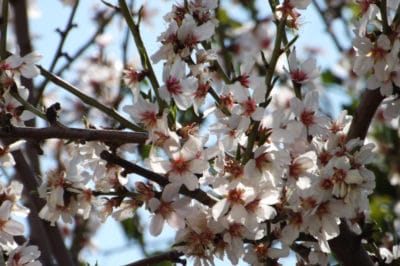Types of Plum and Time of Blooming
The two main groups of plums grown commercially and in backyard orchards are the European and Japanese cultivars. In general, Japanese varieties bloom and set fruit slightly earlier than European cultivars and have lower chill-hour requirements.
Many varieties of both plum types need a pollinator plum tree of a different variety for successful pollination of blossoms. When flowers are pollinated, fruit-set happens and mature fruit is ready for picking in an average of 140 to 170 days after flowering.
Chill Hours and Blooming
Plum trees will not bloom at the right time unless they receive the correct number of chill hours below 45ºF (7.7ºC). Chill hour requirements for plum trees vary by variety and are as low as 150 hours for some Japanese cultivars and up to 1,000 hours for some European varieties.
When trees do not receive the correct number of chill hours, blossoms do not appear at the correct time and fruit production is decreased.
Pollination of Plum Blossoms
In some varieties of plum, flowers contain both male and female reproductive structures, and these types are called self-fertile. Self-fertile varieties self-pollinate and can provide pollen to any other plum tree which requires cross-pollination from a different variety.
Some popular self-fruitful, Japanese varieties are:
- Santa Rosa
- Methley
- Early Orleans
- Catalina
Some common self-fruitful types of European plum are:
- Stanley
- Italian plum
- Green Gage
More types of European plums are self-fruitful than Japanese, however, many plum varieties are of both types are self-unfruitful, needing a pollinator tree of a different variety within 50 feet (15 meters) to provide pollen.
In order for one tree to pollinate another, both must bloom at the same time and the varieties must be compatible. Consult with your local Agricultural Department or the nursery where you buy the trees to find varieties for planting that are compatible for cross-pollination and are hardy in your locale.
Fruiting of Plum Trees
The earliest types of plums mature in about 80 days after bloom, but most are ready for picking in 140 to 170 days. The latest varieties reach ripeness at approximately 210 days after blooming. The span of plum harvest dates ranges from mid-May to early October.
Mature plums develop a thin, dusty coating called ‘wax bloom’ when they are fully ripe. This coating can be wiped off or it will simple get rubbed away as the fruit is handled.
